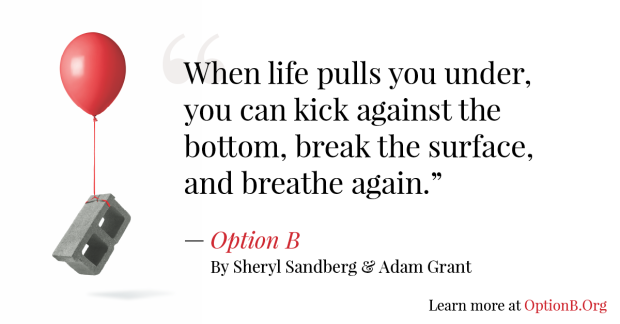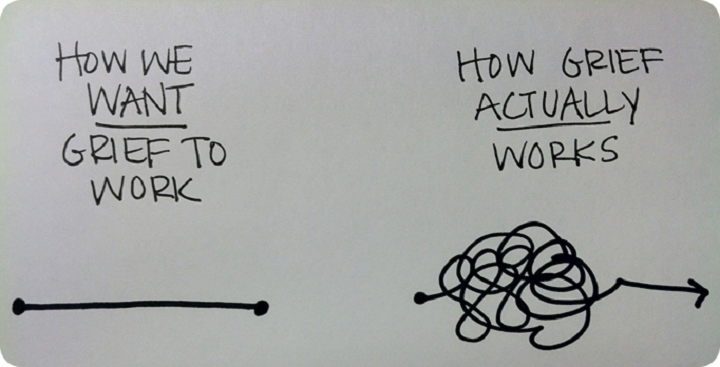Book Review: Option B: Finding Adversity, Building Resilience and Finding Joy
Option B: Finding Adversity, Building Resilience and Finding Joy,
Authors: Sheryl Sandberg and Adam Grant
Alfred Knopf, New York 2017
This recent publication is co-authored by Sheryl Sandberg, chief operating officer at Facebook who shares her personal experience of the sudden death of her husband Dave, while vacationing in Mexico. Co-author, Adam Grant is her friend and psychologist at Wharton. Together they merge the personal and the professional. It is filled with heartfelt stories of loss but also some very practical tips.
As an independent woman who is used to getting things done and leading others, the author has to open herself up to the support and help of friends and family. With this tragic loss she is faced with parenting and living her life on her own.
The book is peppered with stories of others who experienced adversity. Each story speaks to how they built resilience and the coping strategies that worked for them. Sheryl relates her own story as she learns that Option A is no longer available and that she must now choose Option B. Simple strategies are shared, new family rules that all feelings are okay, choosing to find good in each day, no matter how difficult and likely the most difficult lesson of all, to ask for help when you need it. As a parent she uses this to focus on building resilience in her children, to become emotionally healthy adults in the future.
The income of this book is being donated to OptionB.org This non profit initiative helps others build resilience in the face of adversity. The website talks about sharing stories, becoming connected and building resilience.
A good anecdotal read on the twisty, turning road through the journey of grief. Practical and reflective, this is a book for others who have experienced loss. Available to purchase at your local bookstore, online and in audible format.
Save


